One of the best places with one of the most provocative landscapes I traveled to in Ireland was Inis Mór, one of the Aran Islands.
These 3 islands lie off the coast of County Galway in the Galway Bay. Ferrying over to one of the islands makes a great day trip from Galway City. Or you can actually access them from Doolin in County Clare which is where the Cliffs of Moher are.
But stay longer. Being there overnight and perhaps even for a couple of days will give you a more authentic experience. You see, these islands are part of the Gaeltacht areas of Ireland where Irish Gaelic is still spoken and is usually spoken first by the locals. No worries, though, as they’ll speak English to you. And you’ll find that many Irish traditions live on in these areas.
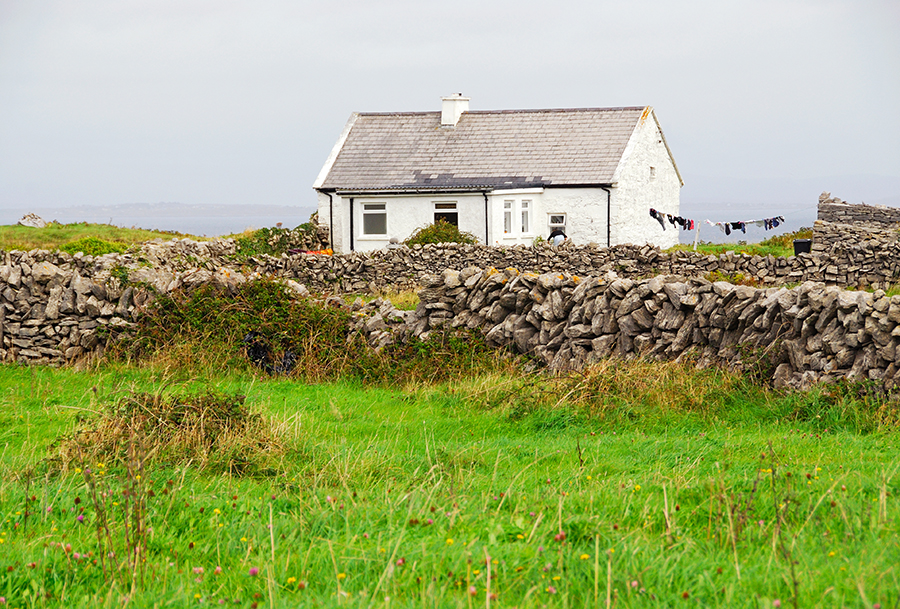
House on Inis Mór, one of the Aran Islands, Ireland
These islands are windswept, bleak, but somehow very beautiful. They evoke feelings of the melancholy spirit that we so often think of when we think of the Irish people. The hardships they have faced over their long history are right in your face here as you gaze upon rock fences and windswept fields. Yet their resilient spirit somehow seems to pop up as you see how they have learned to connect with this seemingly inhospitable land. It’s a place of raw emotions.
Let’s learn a bit more about each of these captivating islands.
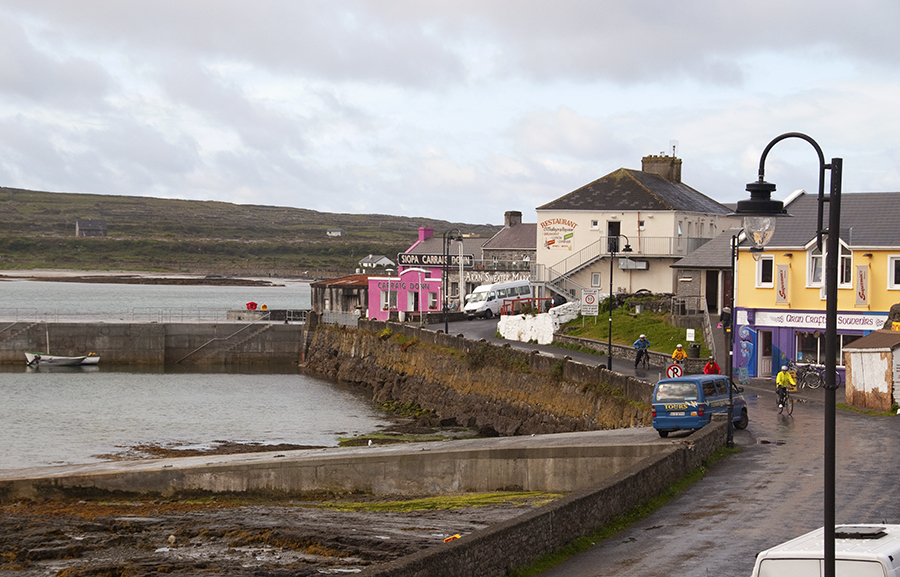
The port town and main town of Kilronan, Inis Mór
Inis Mór (Inishmore)
This is the largest island and the most visited, and as such, the most touristed. Being the largest, it does have more in the way of accommodation, restaurants and pubs, and sites.
Dún Aonghasa (Dun Aengus) is the most popular site on Inis Mór and probably the most-visited. It’s well worth the walk, bike ride or pony trap ride from the main town of Kilronan (where the ferry port is). This 2000 year old fort sits atop a cliff (right at the edge!). No one really knows exactly what it was used for. There’s no fence around this site which is very typical in Ireland and a lot of Europe. So be careful!
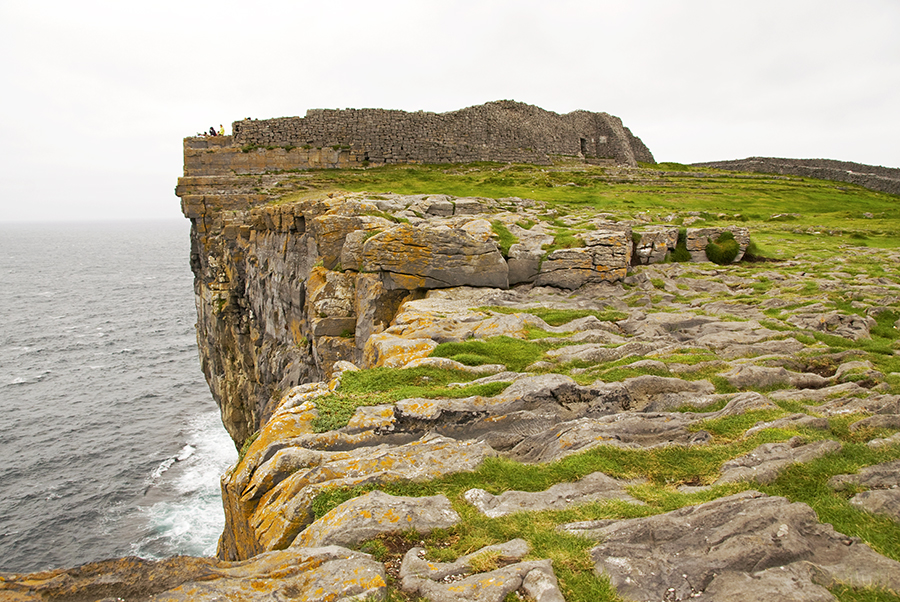
Dún Aonghosa, ancient stone fort on Inis Mór
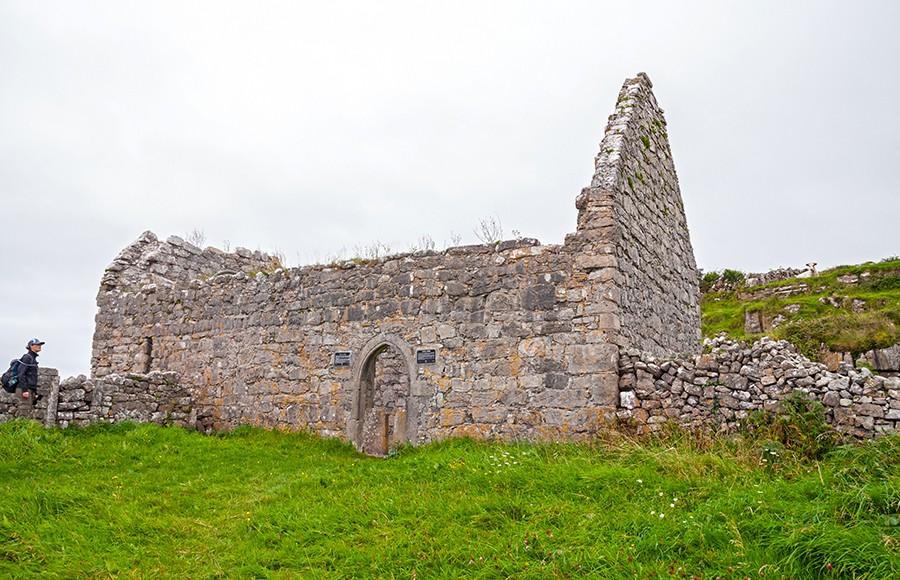
Church ruins, Inis Mór, Aran Islands, Ireland
There are some ruined churches at the western end of the island collectively known as the “Seven Churches”. It’s worth a look see. You’ll also find a small heritage park at Dún Eochla. This park has examples of a traditional thatched cottage and poteen distillery. You’ll find some other ruins of houses, churches and stone walls across the island.
There are 2 things that I particularly love about Inis Mór. One is the stone walls. This was a family’s land, partitioned off for them to farm. The soil is rocky so they had to remove the rocks. The rocks became the fences. Lines of stone fences make for an fascinating landscape.
The second thing I love are the cemeteries. Maybe because they are are out in this desolate landscape they evoke a certain sadness, yet stark beauty. You’ll see Celtic Crosses standing tall in the wind as the grass blows around it. It’s beautiful in a melancholic sort of way.
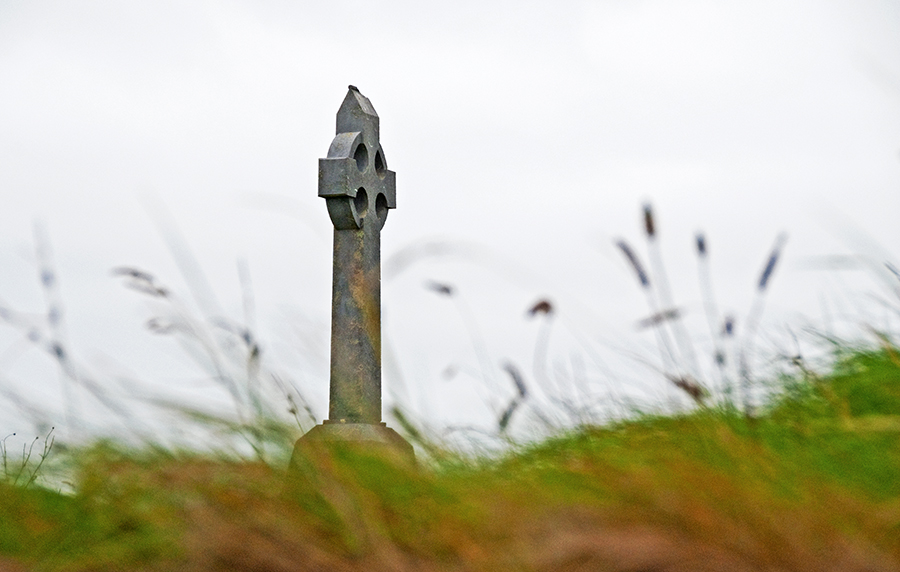
Celtic cross on Inis Mór, Aran Islands, Ireland
Inis Meáin (Inishmaan)
This is the second largest island and the middle island. It’s far less touristed than Inis Mór and is the least populated.
There are 2 stone forts that are worth checking out. One is Dún Chonchúir (Conor’s Fort). It’s an ancient oval stone fort thought to go back to pre-Christian times. It has fabulous views of the island’s other sites and the sea.
Dún Fearbhaí dates back to the 4th century AD. It’s a bit unusual as it’s rectangular in shape, not round like most of the other forts in the area.
The beehive hut, Clochán na Carraige, is also worth a stop as it’s circular on the outside but rectangular on the inside. How did they do it? Always mysteries in Ireland!
Although it is the least visited and smallest population-wise, there are still a few options for accommodation and pubs on Inis Meáin. You’ll just have to plan in advance.
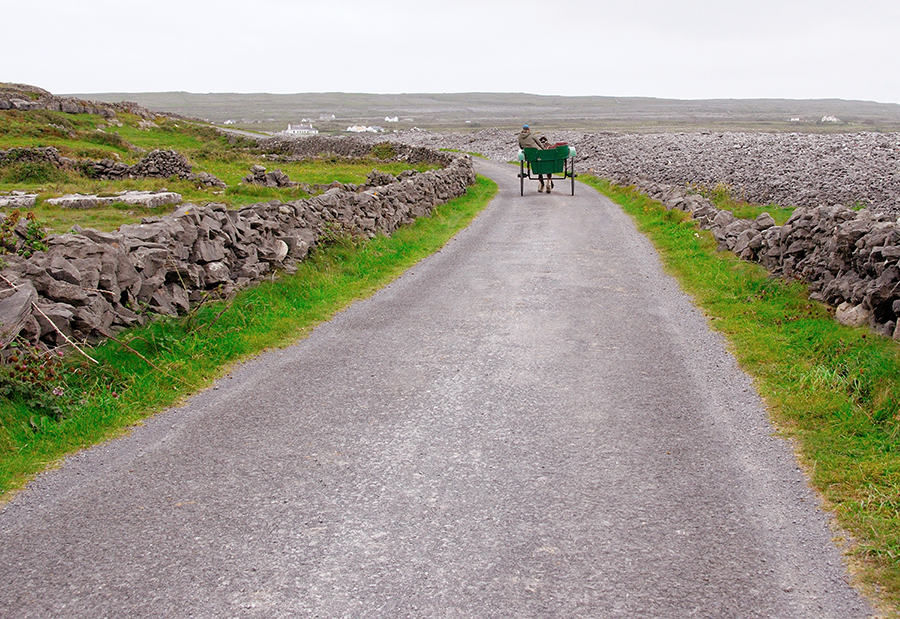
Ponytrap, Inis Mór, Aran Islands, Ireland
Inis Oírr (Inisheer)
Inis Oírr is the smallest of the islands at 3km by 3km. But it has a few more year-round residents than Inis Meaín. It’s probably the most charming of the islands, retaining a bit of a fishing village feel.
Cnoc Raithní is the main site on Inis Oírr. This is a prehistoric monastic site, a stone mound really. It might not be much to look at, but it was obviously very important to the ancient people who lived here as it was a burial ground. The artifacts and cremated remains that were discovered here are dated to 1500BC.
Loch Mór is the Aran Islands only freshwater lake so you’ll want to check it out. It’s a nice escape from the rocky, barren landscape of the islands.
The O’Brien family castle is another site worthy of some time. While it’s more ruins, there’s just enough there to entice and imagine. It’s in a lovely location, lording over the area. There is a tower that you can go up in to get some fabulous views.
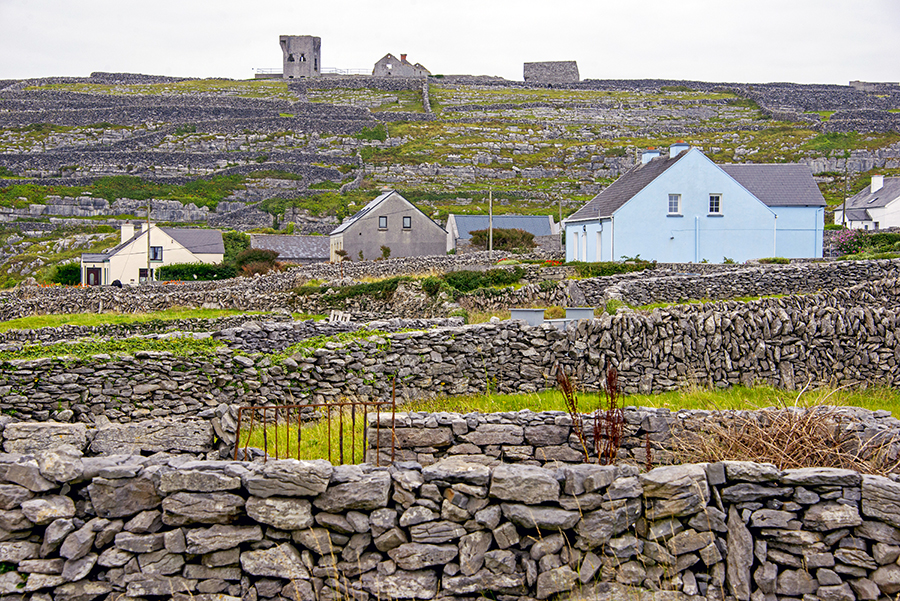
Inis Oírr, Aran Islands, Ireland – photo courtesy of Pixaby
One thing that Inis Oírr has is a lovely beach that is near the main village. The beach is sandy and clean and the water is clear. It’s a perfect place for a swim — if you can handle the temperature of the water!
Although this is a very small island, there are places to stay and of course, pubs. Just be sure to make arrangements before you arrive.
Ready to really see Ireland?
The Aran Islands are such a wonderful place to experience traditional Irish culture and to see part of Ireland’s history. But these islands aren’t for everyone. There aren’t a lot of towns. They’re sparsely populated and more rural in nature. While a day trip to Inis Mór can suit many levels of travelers, staying on one of the islands is better for those who are willing to walk. You can’t take your car!
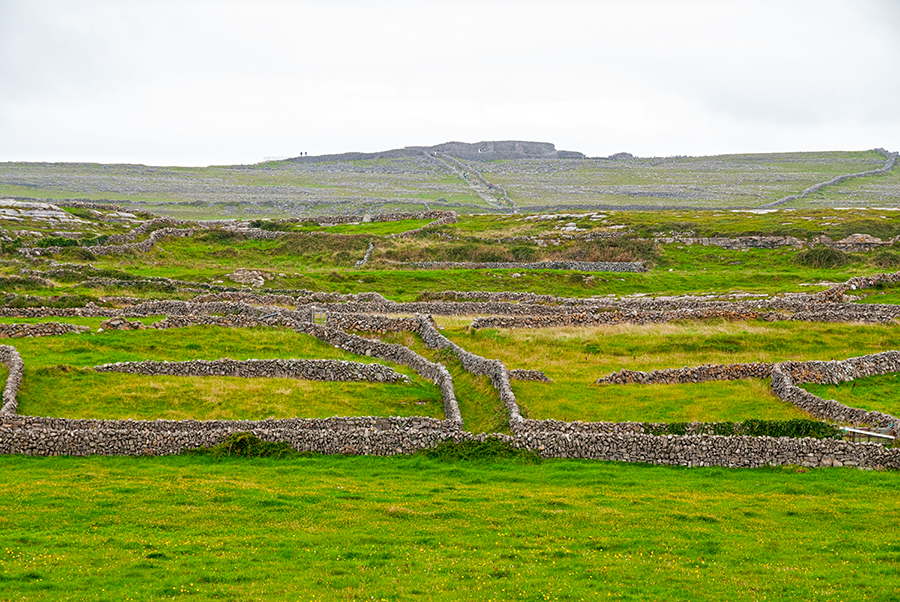
Dún Aonghosa off in the distance, Inis Mór, Aran Islands, Ireland
But if you are willing to walk or bike, the Aran Islands make a wonderful stop on your Ireland journey. They are truly magical and mystical. And totally worth the effort to get there (45 minutes by ferry to Inis Mór) and worth the effort once you are there. It’s a destination you won’t forget.








I LOVED the Aran Islands! I only made it to Inis Mór, but was so glad I did and very happy I took several days to explore. Can’t wait to go back!
I only made it to Inis Mór too, Danielle, but my Irish friend said Inis Meáin is really wonderful. Something to put on our lists!